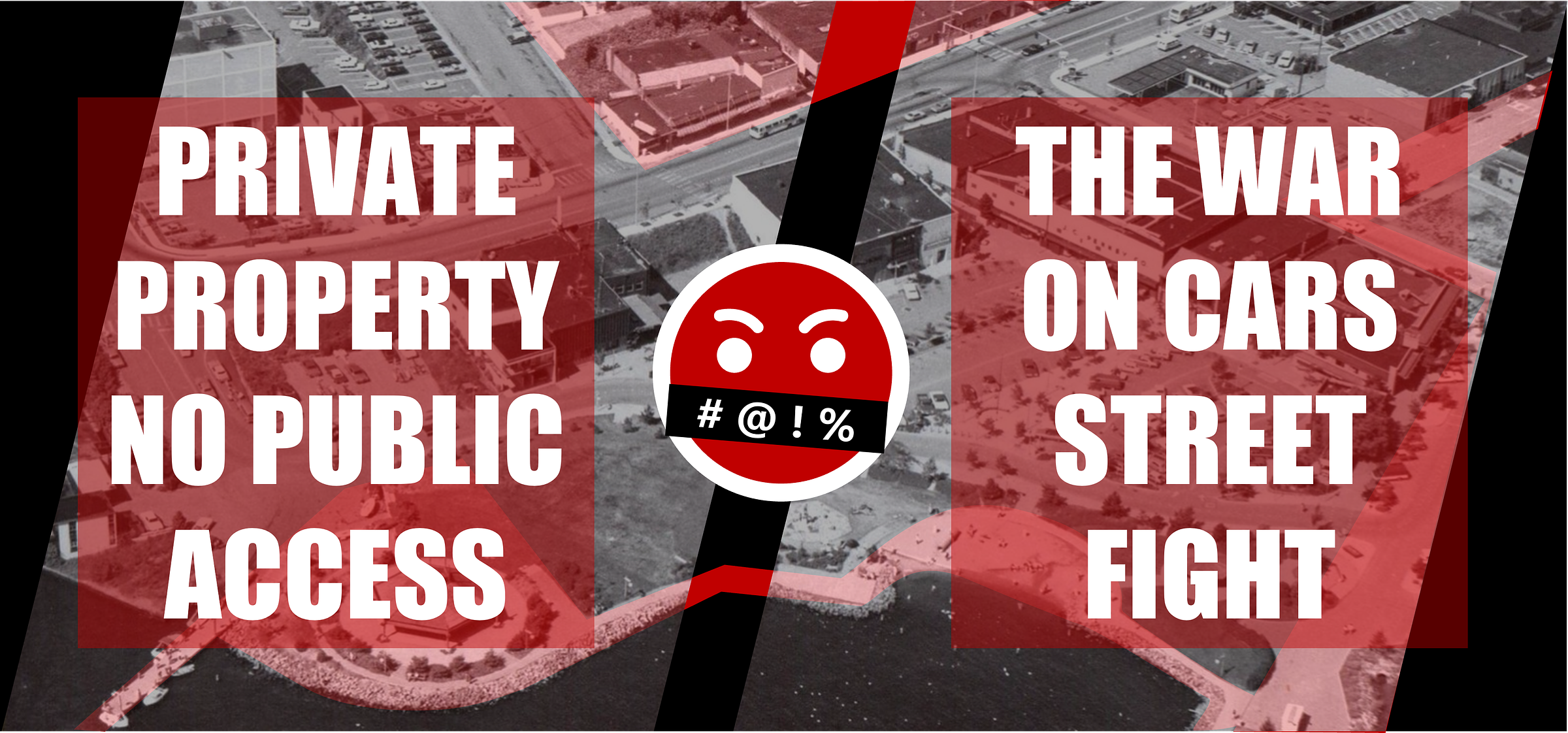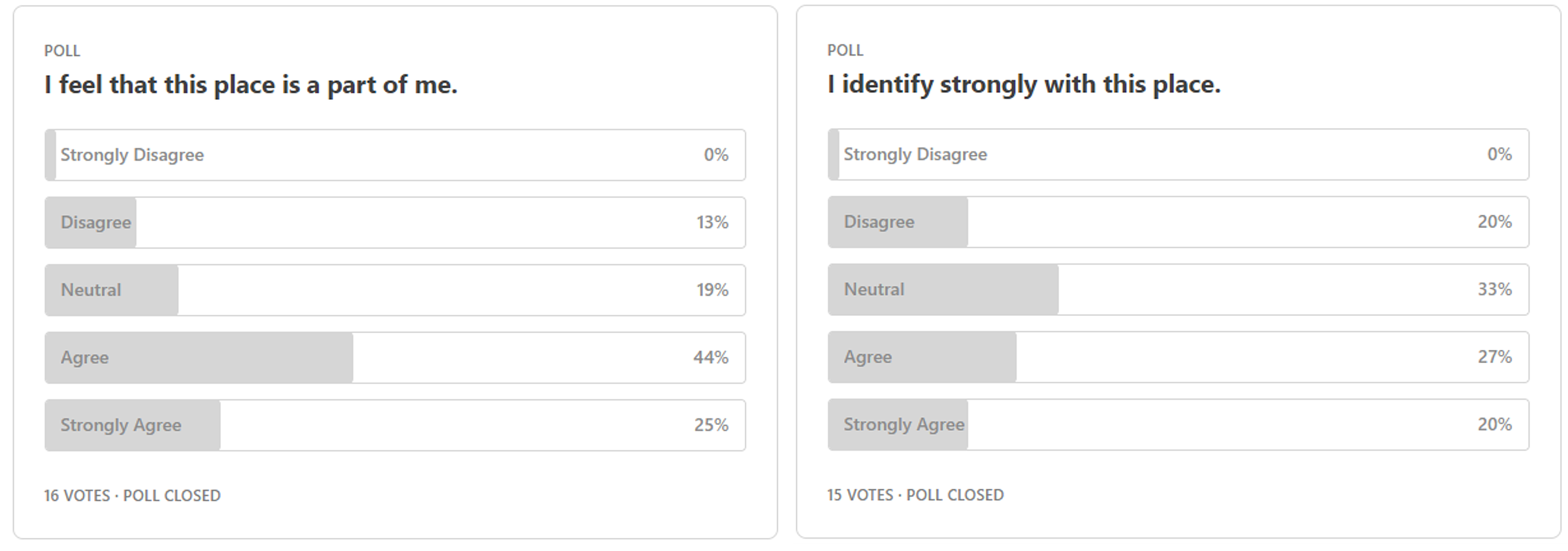Hello Interactors,
I’ve recently been sucked into a conflict over the fate of a cherished section of our small downtown area. Emotions ran hot, but I think they ought not. Everyone has reasons for why they react they way they do, but I wondered what they are. I don’t like seeing distress, so into the rabbit hole I went.
As interactors, you’re special individuals self-selected to be a part of an evolutionary journey. You’re also members of an attentive community so I welcome your participation.
Please leave your comments below or email me directly.
Now let’s go…
IS IT A PARK OR A LANE?
I walked into the room hearing the end of this tirade, “WHAT DOES SHE KNOW? I’VE LIVED HERE FIFTEEN YEARS AND SHE’S BEEN HERE SIX MONTHS? HOW DARE SHE THINK HER OPINION MATTERS AS MUCH AS MINE!” The room was tense, people were nervous, and this was the first hour of the first day of two weeks of daylong 15-minute stakeholder ‘listening sessions.’
Our city government hired a consultant to determine the fate of less than one block, about 200 feet, of our quaint little downtown business district. It’s a stretch of road was once called Commercial Street. This offers a clue as to what the original city organizers had in mind for this strip of concrete just steps from Lake Washington. A ferry once docked there bringing affluent Seattle folks to shop at the local J. C. Penny’s and buy fresh produce. Now they drive over a floating bridge to buy multi-million-dollar lakefront homes.
The 1970s brought a rebuilding of this area. Local entrepreneurs refurbished dilapidated downtown stores, paved over of marshlands to make parking lots, and renamed Commercial Street to Park Lane. Select members of the organizing committee envisioned a pedestrian-oriented, tree-lined boulevard. Instead of a road, there was talk of regreening the creek that once fed the marshland at the shore’s edge but had since been channeled in a culvert underground. In the end, the road was preserved and made to be one-way with angled on-street parking on each side. More of a lane than a park.
But nature has a way of protesting. For decades the subterranean slough cracked and buckled the streets, the trees became waterlogged and diseased, and maintenance was troublesome and routine. In 2015 the city beefed up a water pump, remodeled Park Lane in the image of a Dutch ‘Living Street’ – a road that puts cars and pedestrians at the same level so the space may be shared. The roadway is curved or has obstacles to slow cars to the pace of the people.
In the Netherlands, you’ll sometimes find two or four spots for parking or deliveries on a stretch this long. Park Lane has seventeen. The Dutch would have a hard time calling this a true ‘Living Street’. It’s more like a small parking lot with a meandering lane down the middle.
But it is far better than a conventional road. It features bioswales to absorb floods of runoff and restaurants have just enough space for limited outdoor seating. Like so many other restaurants around the world, that seating was expanded when COVID hit. In a controversial move, the city allowed restaurants to spill into the parking spaces during select times, blocked cars from entering the lane, and gave the entire space over to pedestrians.
Now that emergency COVID measures have lifted and people – and cities – are attempting a nostalgic return to a so-called ‘normal’, a decision needs to be made on the future of Park Lane. It seems many residents, if not most, would like to see Park Lane as some did in the 1970s – a more natural, people-oriented place. Not a parking space. But not everyone agrees.

The business owners have mixed opinions. Some restaurants enjoyed the increased revenue, some had trouble scaling staff, and others are indifferent. Retailers and service providers care less about what happens after hours. They support whatever restaurants want in the evenings, but are adamant parking remain during business hours.
Like so many places around the world, Park Lane has become a contested public space. It’s an area zoned for commercial use, so business and property owners believe their opinions should be given priority. But this area is also contained within a much larger neighborhood filled with a growing number of residents who believe their opinions matter most. The neighborhood sits within a city, surrounded by a county, encompassed by a federally mandated regional metropolitan planning organization (MPO), which coordinates between the federal, state, and many local governments on how best to grow. All of which are in a state united with others under the power of a federal government.
The citizen run, and city government ordained, neighborhood association has a neighborhood plan with multiple policies calling for fewer cars, less parking, and more – and safer – transit, biking, and walking. And so does the city’s master plan.
Meanwhile, the city competes with neighboring cities to attract more businesses which bring more revenue. This city has also applied to the MPO for this downtown area to be delegated a ‘Regional Growth Center’ which will bring denser housing, many more people, and a chance to qualify for federal funding. The population of this area is expected to double over the next 12 years bringing more diversity of people and business.
A decision is pending in June on the fate of how these 200 feet of public space will be used. But in many ways, this is a proxy for a larger battle brewing throughout the city, the county, the region, and the state — just as in many other cities worldwide. As expected, sides form and tribes align between business alliances, citizen coalitions, and property rights guardians. It’s getting tense, people are nervous, some are scared, and everyone wants to get their way. This is emblematic of the last few years and perhaps the first of many in decades to come. Get ready for more ‘listening sessions.’
NIMBYS GO BANANAS
Notice I used the word ‘battle’ to describe this ordeal. It’s a popular metaphor. There’s a book called ‘Street Fight’ about these conflicts over space, and another called ‘Neighborhood Defenders’. You can subscribe to a podcast called the ‘The War on Cars’. What is it about place that makes people want to defend it or upend it like a battlefield? Why not append it or amend it like a constitution? Or tend it and mend it like a garden?
There’s a pejorative term for those attempting to protect a place from change, NIMBY (Not In My Back Yard). For a variety of reasons, they feel compelled to protect their property against any nearby changes that might impact them, their property, or their values. Like anyone who has a pejorative term attached to them, they reject it.
When confronted, they might say things like, “It’s not that I’m against more space for walking, but…” or “It’s not that I’m against renewable energy, but…” or “It’s not that I don’t like Black people, but…” And the ‘but’ is usually followed by a proposed project nearby that makes them uncomfortable.1 Sometimes this can become extreme and people go BANANAs (Build Absolutely Nothing Anywhere Near Anyone).
(Below is a video that illustrates what many public comments sessions sound like)
But curiously, some research shows a different NIMBYISM can exist called “inverse NIMBY syndrome.”2 It’s been shown that some who live near certain developments can sometimes be more accepting than those living further away. They have the most intimate knowledge, experience, and discourse allowing them to cope better with the change.
YIMBYs (Yes In My Back Yard) are often critical of NIMBYs because they believe these folks are just ignorant of the facts. Researchers call this ‘information deficit’ and it can inspire proponents of new projects to attempt to educate the opposition in hopes of persuading them. But there’s data that shows NIMBYs can often be very well informed and oppose projects not on lack of facts, but out of self-interest. They may even agree on the facts but reject the change on personal grounds. However, this is also problematic as it’s been shown that often times the ‘self-interest’ argument masks larger issues around self-perpetuating social, racial, or economic inequities.3
That is, while they may have a right to reject a proposed project, they may be doing so from a position of unfair power. They have an individual right, but they also have a duty to their fellow society members. Individual rights are granted only when their duty to fairly honor the rights of others are observed.
What is at the root of one’s desire to protect a place? Research in the field of environmental psychology claim these people are not just protecting a place, they’re protecting their own identity which is associated with that place. Their defense, sometimes aggressive, may be a coping mechanism stemming from denial of eventual, inevitable change. There is a fear that a potential disruption of a coveted place could lead to a potential disruption in their life.4
The questions I put forth in the survey last week are a common method of getting at this sense of identity attached to place. Eleven out sixteen Interactors said they agree or strongly agree that they feel the place they call home is a part of them. When asked if they identify strongly with this place five out of fifteen were neutral, four agreed, and three strongly agreed.
I’m reminded of these sayings, ‘you can take the girl out of the country, but you can’t take the country out of the girl’ or ‘home is where the heart is.’ These strong, emotional associations can either emerge from within or be reflected by society. For example, “I feel like Rome is a part of me” versus “I feel completely Roman.” These attitudes and behaviors can also develop, morph, and strengthen over time. Communication, language, and how a place is portrayed in media and politics can also influence individual differences in how one identifies with a place.
When these places are disrupted naturally (like natural disasters and fire) or by humans (like burglaries, voluntary migration, or redevelopment projects) people experience psychological trauma. Just the fear of changes to a place or threats of loss can induce anxiety. This can be revealed or compounded over time contributing to multiple stages of grief.
COPING WITH THE CONCRETE
Researchers have uncovered a three-stage process of trauma associated with disruption of place:
Pre-disruption: Anticipating possible outcomes or imagining potential futures.
Disruption: Immediate feelings of anxiety and grief from loss or disruption.
Post-disruption: Anxiety associated with adapting to change.5
These are often found to correspond with varying levels and stages of ‘emotional volatility’ from shock of the eventuality of change, to anger and depression of the actual event, to residual feelings that come with coping with post-change adjustments.
In the case of natural disasters or fires these stages of trauma can be sudden, pronounced, and rushed, while urban redevelopment projects can stretch these emotions over months or years. How those who are impacted communicate with one other, and those around them, can influence the collective and individual emotional volatility.
One way of managing these emotions is to manage the communication. One technique used in Europe more than the United States is a socio-psychological approach called social representation theory. This involves sitting down with groups of people to first orient them to their own shared beliefs and knowledge – an anchoring. With a shared understanding, new abstract concepts and ideas are then presented in concrete ways that associate change with their shared understanding – objectifying change. The group can then have a conversation over which elements represent threats and which offer opportunities.
Patrick Devine-Wright is a professor of human geography at the University of Exeter who incorporates environmental psychology into his research. He believes social representation theory offers a holistic approach to understanding and reducing the adverse psychological effects that come with changes in place. He proposes a staged approach that considers both the social and psychological factors associated with place-based conflicts and traumas.
It starts with becoming aware of what kind change in a place might occur. With a shared awareness, the next stage is interpreting the potential implication to the proposed change. The shared interpretation leads to evaluating the potential outcomes, both positive and negative. Addressing the inevitable stress and anxiety that can come with these results, he moves to coping – how one can deal with change in a healthy way. And the final stage is acting on those healthy means of coping.

He believes this
“framework provides a psychological account of public responses that should be seen within a larger multi-disciplinary context of economic, political and sociological factors that shape the histories of places, the policies and procedures shaping development and the abilities of individuals and groups to actively support or oppose change.”6
I think he’s on to something. As I consider how local governments announce public projects, seek public input, and execute on new projects, I see how each stage of his proposed process is either side-stepped, performed inadequately, or unintentionally avoided. It’s no wonder sides get formed, emotions run high, and frustrations, distrust, and anxieties become perpetually present with each propose change to public space.
I’m not saying it’s easy, but is it impossible? Perhaps it is. It takes concerted effort to hold even the most rudimentary public forums to discuss propose changes to place. It may be even harder now knowing how divisive civic discourse has become. I can see where cities would rather not even ask.
Perhaps cities shouldn’t do on their own. It could be that the process professor Devine-Wright devised is both divine and righteous. If I squint at his process, it looks a lot like a well-functioning democracy by the people, for the people, so long as it’s executed by a government that cares for people. But expecting that to occur brings about my own kind of frustration, fear, and anxiety!
I’ve been sucked into this problem, so how am I coping? I’m starting by sharing in hopes of gaining a shared understanding. I’m working to interpret the implications of changing our little Park Lane and evaluating the potential outcomes. I’m trying to do it with people I know may be suspicious of me or what I believe. But I know change is coming because the only thing permanent is change. So I’m doing my best to cope, aid others with how they may cope, and encouraging actions that can reduce our collective psychological trauma. Maybe you can too!
Rethinking NIMBYism: The Role of Place Attachment and Place Identity in Explaining Place-protective Action. Journal of Community & Applied Social Psychology. Patrick Devine-Wright. 2009.
Ibid
Ibid
Ibid
Ibid
Ibid
















The Psychology of Neighborhood Defenders